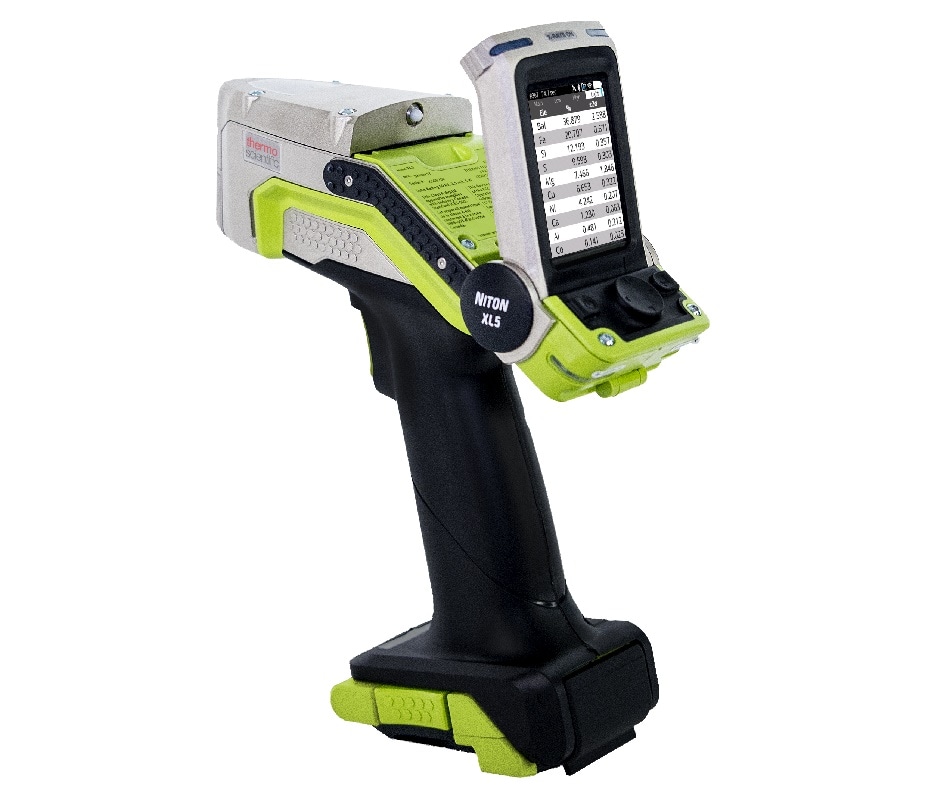
The latest update to the Thermo Scientific Niton XL5 handheld X-ray fluorescence (XRF) analyzer includes three new calibration modes and additional functionality that bring the power, speed and accuracy of the analyzer to consumer goods manufacturers and regulators. The new capabilities are designed to ease screening of products for hazardous materials, helping manufacturers and regulators rapidly confirm compliance with regulatory requirements that protect consumer health and safety.
The Niton XL5 analyzer, the smallest and lightest tube-based XRF analyzer available for elemental identification, now includes electronic alloy, plastics and industrial paint modes. By accessing electronic alloy mode, manufacturers and regulators can screen electronic materials for prohibited and harmful elements such as lead, arsenic, cadmium and bromine. Plastics mode is designed to enable users to measure hydrocarbons for heavy metals, while industrial paint mode is designed to ease the analysis of painted structures or paint samples that have a higher range of concentrations than consumer paint.
Weighing only 2.8 pounds (1.3 kilograms) with a compact, ergonomic design, the Niton XL5 analyzer is intended to reduce operator fatigue. It features a powerful, miniaturized 5W x-ray tube that allows users to observe lower limits of detection (LODs) over legacy Thermo Scientific Niton XRF analyzers. Its point-and-shoot simplicity is designed to provide fast and accurate results.
Key Applications
Elemental determination and alloy identification in consumer goods, including electronics materials, plastics and polymers; analysis of industrial paint coatings and samples; product RoHS compliance; consumer goods regulatory compliance.
New Features
- TestAll: The analyzer determines the substance of a sample within the first seconds of analysis and automatically enables either electronics alloy or plastics mode, as applicable
- Element Thresholds: Users can configure element-specific pass/fail criteria for RoHS regulations
- User Permissions: The analyzer now has three built-in accessibility levels (administrator, manager and operator), each with different functionality and access combinations based on a user’s role